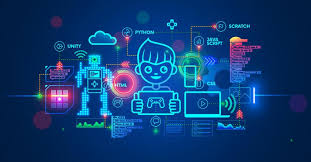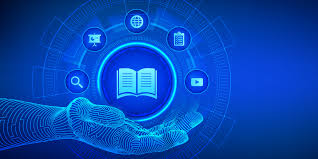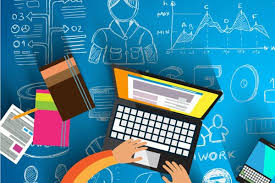
Maximizing Learning Potential: The Strategic Use of Technology in Education
The Impact of Technology in Education
Technology has revolutionized the way we learn and teach, bringing about significant changes in the education sector. With the integration of technology into classrooms and educational institutions, students and educators alike have access to a wealth of resources and tools that enhance the learning experience.
One of the key benefits of technology in education is its ability to make learning more interactive and engaging. Educational apps, online platforms, and multimedia resources allow students to explore concepts in a dynamic and immersive way, making learning more fun and effective.
Furthermore, technology has made education more accessible to learners of all backgrounds. Online courses and virtual classrooms enable students to pursue education remotely, breaking down geographical barriers and providing opportunities for lifelong learning.
Technology also plays a crucial role in personalized learning. By leveraging data analytics and artificial intelligence, educators can tailor instruction to meet individual student needs, ensuring that each student receives the support they require to succeed.
Collaboration is another area where technology shines in education. Tools such as video conferencing, shared documents, and collaborative platforms enable students to work together on projects regardless of their physical location, fostering teamwork and communication skills.
While the benefits of technology in education are vast, it is essential to use these tools thoughtfully and responsibly. Educators must ensure that technology enhances learning outcomes rather than detracting from them, striking a balance between traditional teaching methods and innovative technologies.
In conclusion, the use of technology in education has transformed the way we learn and teach, offering new possibilities for engagement, accessibility, personalization, and collaboration. By embracing technology in education, we can create a more inclusive and dynamic learning environment that prepares students for success in an increasingly digital world.
6 Effective Ways to Enhance Education with Technology
- Utilize interactive educational software and apps to engage students in the learning process.
- Encourage collaboration among students through online platforms and tools for group projects and discussions.
- Provide access to online resources such as e-books, videos, and educational websites to supplement traditional learning materials.
- Use virtual reality (VR) and augmented reality (AR) technology to create immersive learning experiences.
- Implement a learning management system (LMS) for organizing course materials, assignments, and grades efficiently.
- Incorporate adaptive learning platforms that personalize instruction based on individual student needs and progress.
Utilize interactive educational software and apps to engage students in the learning process.
By utilizing interactive educational software and apps in the classroom, educators can effectively engage students in the learning process. These tools offer a dynamic and immersive way for students to explore concepts, making learning more interactive and enjoyable. By incorporating interactive elements into lessons, teachers can capture students’ attention and create a more engaging learning environment that promotes active participation and deeper understanding of the material.
Encourage collaboration among students through online platforms and tools for group projects and discussions.
Encouraging collaboration among students through online platforms and tools for group projects and discussions is a powerful way to enhance the learning experience. By leveraging technology to facilitate teamwork and communication, students can engage with their peers in a dynamic and interactive manner, regardless of physical distance. These collaborative efforts not only foster a sense of community and camaraderie among students but also promote critical thinking, problem-solving skills, and creativity. Through online platforms, students can share ideas, provide feedback, and work together towards common goals, preparing them for success in an increasingly interconnected world.
Provide access to online resources such as e-books, videos, and educational websites to supplement traditional learning materials.
Providing access to online resources such as e-books, videos, and educational websites is a valuable tip for enhancing the learning experience in education. By supplementing traditional learning materials with digital resources, students can access a wealth of information and perspectives that may not be available through conventional means. These online resources offer interactive and engaging content that can enrich classroom instruction, cater to diverse learning styles, and foster independent exploration and critical thinking skills. Embracing technology in this way empowers students to expand their knowledge beyond the confines of textbooks and worksheets, creating a more dynamic and immersive learning environment.
Use virtual reality (VR) and augmented reality (AR) technology to create immersive learning experiences.
By incorporating virtual reality (VR) and augmented reality (AR) technology into educational settings, educators can create immersive learning experiences that engage students in new and exciting ways. Through VR and AR applications, students can explore virtual environments, manipulate objects, and interact with digital content, enhancing their understanding of complex concepts through hands-on experiences. These technologies have the potential to revolutionize education by providing students with interactive and dynamic learning opportunities that stimulate curiosity and foster deeper engagement with the material.
Implement a learning management system (LMS) for organizing course materials, assignments, and grades efficiently.
Implementing a learning management system (LMS) is a valuable tip for enhancing the use of technology in education. By utilizing an LMS, educators can efficiently organize course materials, assignments, and grades in one centralized platform. This not only streamlines the administrative tasks associated with teaching but also provides students easy access to essential resources and feedback. The use of an LMS promotes organization, collaboration, and effective communication between teachers and students, ultimately enhancing the overall learning experience.
Incorporate adaptive learning platforms that personalize instruction based on individual student needs and progress.
Incorporating adaptive learning platforms in education is a game-changer, as it allows for personalized instruction tailored to each student’s unique needs and progress. By leveraging technology to adapt teaching methods in real-time based on individual learning styles and abilities, educators can create a more engaging and effective learning experience. This approach not only enhances student understanding and retention but also fosters a sense of empowerment and self-directed learning, ultimately leading to improved academic outcomes.



